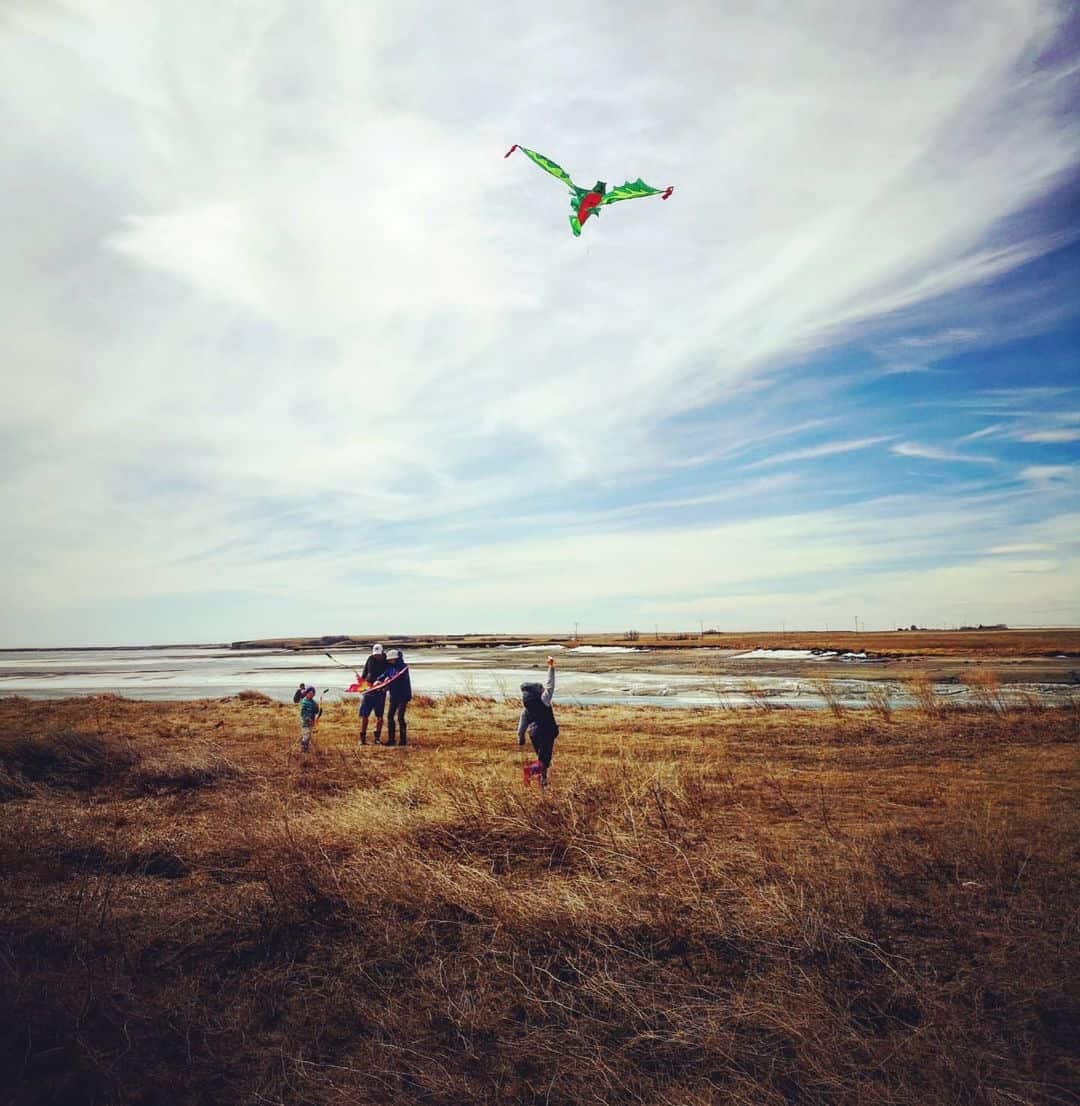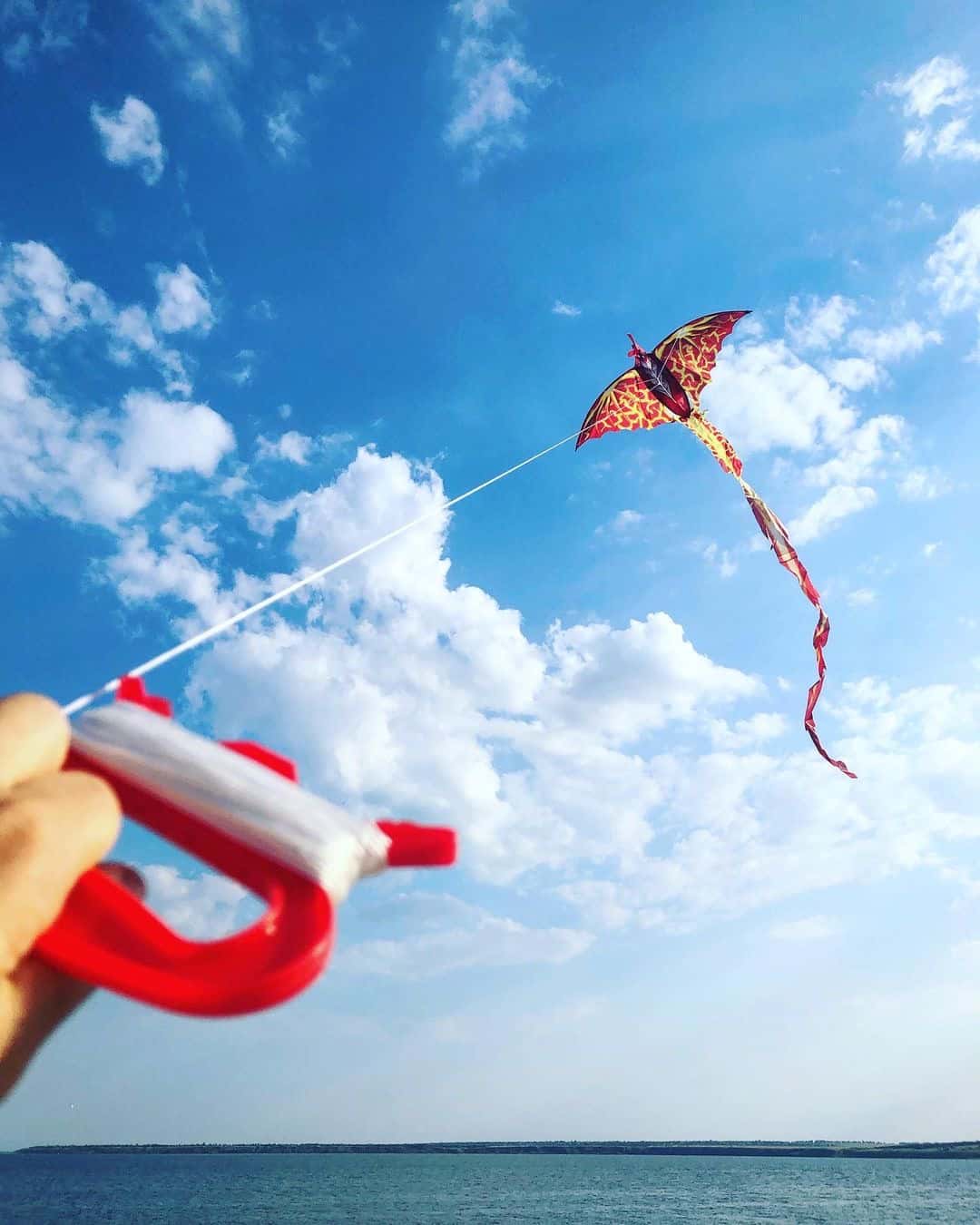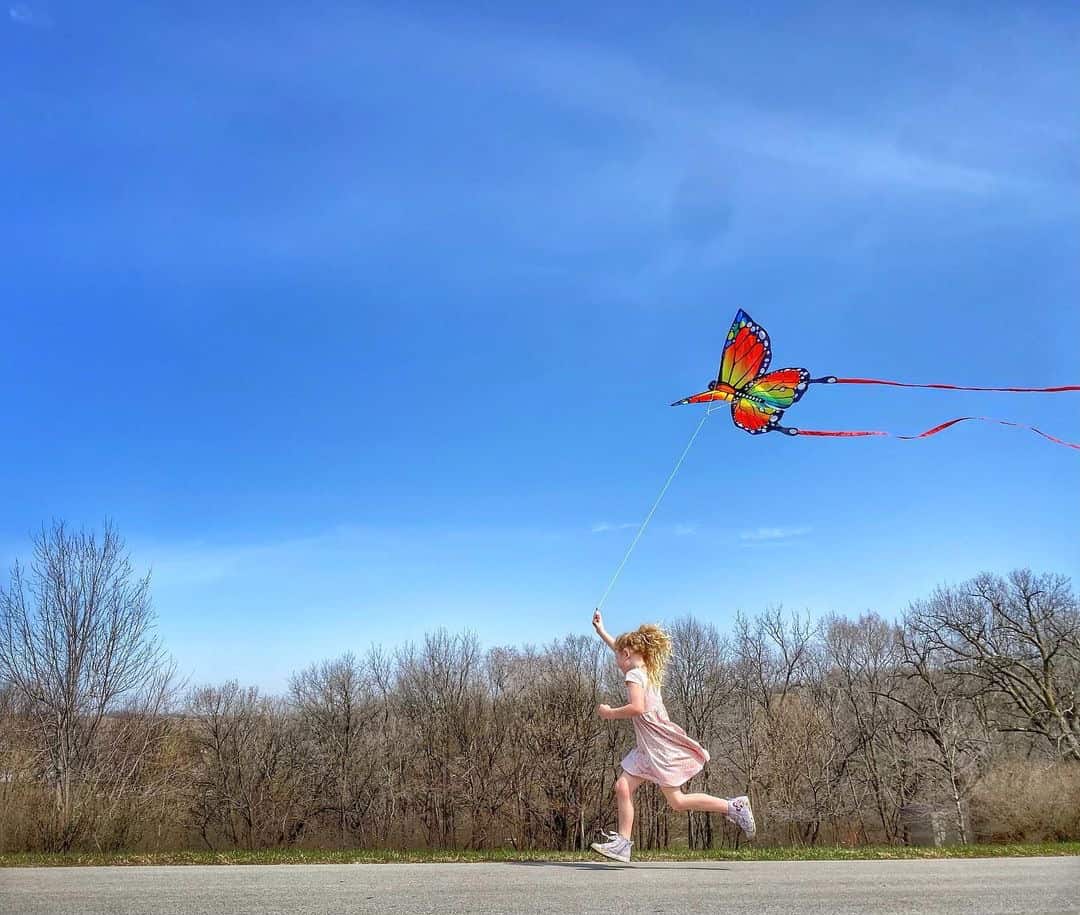Your cart is currently empty!

Kite Flying with Kids
Springtime means warm breezes and sunny days – perfect weather for flying a kite. Children absolutely love flying kites and it’s easier to do than you think. Flying a kite is one of those activities that people often talk about, but never get around to doing. Today, we want to change that and challenging you to take your kids out for a kite flight! We’ll walk you through the steps of how to choose a kite for kids, how to launch, fly and land a kite, plus explain all the benefits of kite flying. Here are some great tips for flying a kite and ways to make your kite flying extra fun!
{This post contains affiliate links.}

Let’s go fly a kite… up to the highest height.” Mary Poppins
Benefits of flying a kite
There are so many great reasons to go fly a kit with kids and a lot of physical, educational, and social benefits. Kiting is a healthy and active outdoor activity for kids that is usually very low-cost and budget-friendly. Spending time outside means that kids get a healthy dose of Vitamin D from sunlight. Flying a kite also provides exercise for your child’s body as they chase. It’s wonderful for hand-eye coordination, kinesthetic awareness, and gross motor skills. Kite flying also helps strengthen the eyes, as they focus far and near observing and controlling the kite’s flight.
Fling a kite also provides social benefits. When kids are outside flying kites, they have the opportunity to interact and spend quality time with parents, family, and friends. Kite flying is a great bonding activity and requires coordination and communication skills with others.
 Feature image credit: @susan.grimes
Feature image credit: @susan.grimes
 Feature image credit: @jenniferdonlevy
Feature image credit: @jenniferdonlevy
Kite flying is fun and educational
There are so many great lessons to be learned while flying a kite. Kids can learn about science, physics, aerodynamics, weather, and ecology. Kite flying also helps develop hand-eye coordination, kinesthetic awareness, and gross motor skills.
Once you have a kite, kids love the challenge and the thrill of launching the kite. Once they figure out how to get it flying they can begin to master the challenge of keeping the kite in the air, and maybe even learn a trick or two. The final challenge is how to get the kite down when you’re ready to head home.
 Feature image credit: @ashleytheislander
Feature image credit: @ashleytheislander
 Feature image credit: @fokys_pokys
Feature image credit: @fokys_pokys
How to choose the right kite
The first thing you need to do to get started with kite flying is to get a kite! There are more styles, colors, and sizes of kites than ever before – not to mention, kites are now easier to put together, get into the air, and fly. You can purchase a basic-shaped kite (diamond, triangle, prism) for not much money (under $20) that’s easy to assemble and easy for little kids to handle. Elaborate 3-D box kites or dragon kites may look cool, but the standard shapes are the easiest to fly for beginners. Once you’ve mastered the basics of kite flying, you can move up to the more creative designs and shapes.
Here are a few highly recommended budget-friendly kites for kids:
Make your own kite for a STEAM activity
If you have older kids and are up for a challenge, you can choose to make your own kite and turn this into a STEAM activity. Kids can learn a lot from designing, building, and decorating their own kites.
 Feature image credit: @kristcx
Feature image credit: @kristcx
The perfect kite-flying wind
The next step is to assess the wind. You will need to pick a kite-flying day with good wind, but not too much wind. Days with consistent light to medium winds are good kite flying days. Flags on masts should be extended straight out (good wind), but not rippling or snapping (too much wind). Too much wind could result in your kite looping and diving. It could be very difficult to control or keep a hold of. Too little wind and your kite may not be able to stay in the air. Make sure to check the weather and never fly a kite in a thunderstorm.
 Feature image credit: @larissahollowayphoto
Feature image credit: @larissahollowayphoto
 Feature image credit: @rachelkrausmannphoto
Feature image credit: @rachelkrausmannphoto
Look for a wide-open space
Next, you’ll need to pick the perfect location for kite flying. A beach or wide-open field is the ideal spot. Check out your local parks, ball fields, farms. The more room you have, the more fun you will have kite flying with kids. Avoid hills, because the wind will make kite flying difficult. Take note of your surroundings and avoid power lines and nearby trees.
 Feature image credit: @desireemacke
Feature image credit: @desireemacke
How to launch a kite
The hardest part of kite flying is initially getting the kite into the air. Young children love to run to launch a kite. While this is fun for kids, it is actually not the best way to launch a kite. You can certainly let them try, though! If you would like to launch this way make sure your child is running into the wind with only a little bit of line. Once the wind catches it they’ll need to stop and let out more line.
The best way to get your kite in the air is to stand with your back to the wind, hold the line in one hand, hold the kite up in the other (with the nose pointing straight up). Let the wind catch the kite then let go. Don’t throw it into the air, just gently release it into the wind and let line out as the wind lifts the kite. If the wind lulls, pull the line in tight to make your kite gain altitude.
You could also let your child hold the kite about fifty feet away. Pull the line tight and signal to them to release it. Take a few steps backwards and the kite should shoot up into the sky, just like if you were running.
 Feature image credit: @sixdegreesofchaos
Feature image credit: @sixdegreesofchaos
Tips for keeping your kite in the air
Each different style of kite (design, size, shape, and material) will need different amounts of wind for successful flying. If your kite is new, try checking the package for wind recommendations. If that’s not an option, the best way to figure it out is through trial and error! You might have to try a few different times or locations to find the best wind for successful flying.
However, once the kite is flying high and smoothly, keep the string at a comfortable tightness and it will not be hard to keep it flying. If the string is too slack, reel some in. If the kite pulls hard, let some additional line out.
 Feature image credit: @wildlyraised
Feature image credit: @wildlyraised
How to bring your kite down
When you’re finished flying the kite, simply wind the kite string around the spool or handle while walking towards it to bring it in. Remind your child to wind up the string slowly and carefully so it does not get tangled or knotted. Easy peasy!
 Feature image credit: @sara_mccarty
Feature image credit: @sara_mccarty
Kite flying tips & tricks
- The perfect length – Don’t let out too much line. It’s hard for people to see and enjoy if a kite gets too high. If your flying line becomes slack, bring in a little. If the kite begins to pull too hard or act unstable, let some line out.
- Teaching about turbulence – Turbulence is an irregular motion of the air resulting from eddies and vertical currents. Sometimes, as the wind goes around objects (trees, buildings, hills), it causes turbulence. Other times, turbulence might be in the form of updrafts over pavement or barren places and downdrafts over vegetation and water. As you’re kiting, you might feel your kite get bumpy. If you find this phenomenon, it’s a fantastic learning opportunity for children.
- Come up with challenges – If your child likes a good challenge, there are definitely ways to make kite flying more interesting. Challenge your kid to see how quickly he can get the kite in the air or if he can get the kite to dive and soar. When it’s time to leave, challenge your kid to bring the kite in without letting it touch the ground. He’ll have to pull it in quickly to keep it airborne.
 Feature image credit: @eliza.flaska.mi
Feature image credit: @eliza.flaska.mi
Have you flown a kite with your kids?
What kite flying tips do you have?
Comments
10 responses to “Kite Flying with Kids”
[…] Kite Flying with Kids : How to Choose, Launch, Fly & Land a Kite […]
[…] Kites: If you’re looking for another activity that is portable and provides endless amounts of outdoor time, a kite is a perfect solution. These Pocket Flyer Kites can even be put in a kid’s backpack to fly anywhere the wind strikes. Before you head out, be sure to read our post on Kite Flying with Kids. […]
[…] and higher! Just don’t forget to include a kite in your beach vacation packing list.Learn More: Run Wild My ChildAnother classic game, beach volleyball is the perfect sport for some beach action. It’s one of […]
[…] and higher! Just don’t forget to include a kite in your beach vacation packing list.Learn More: Run Wild My ChildAnother classic game, beach volleyball is the perfect sport for some beach action. It’s one of […]
[…] Kite flying – Cheap and cheerful entertainment for hours. […]
thank you for the article
[…] For more information on the best way to fly a kite, the best kites for kids, and more, check out our full post on Kite Flying with Kids. […]
[…] If you want to try flying a kite while you’re at the Outer Banks, brush up on your skills by reading this great post on kite flying with kids. […]
[…] that and challenge you to take your kids out for a kite flight! We’ve got a great post on kite flying with kids, where we walk you through the steps of how to choose a kite for kids, how to launch, fly and land […]
[…] a kite helps kids learn about science, physics, and weather while developing hand-eye coordination and motor […]

Leave a Reply